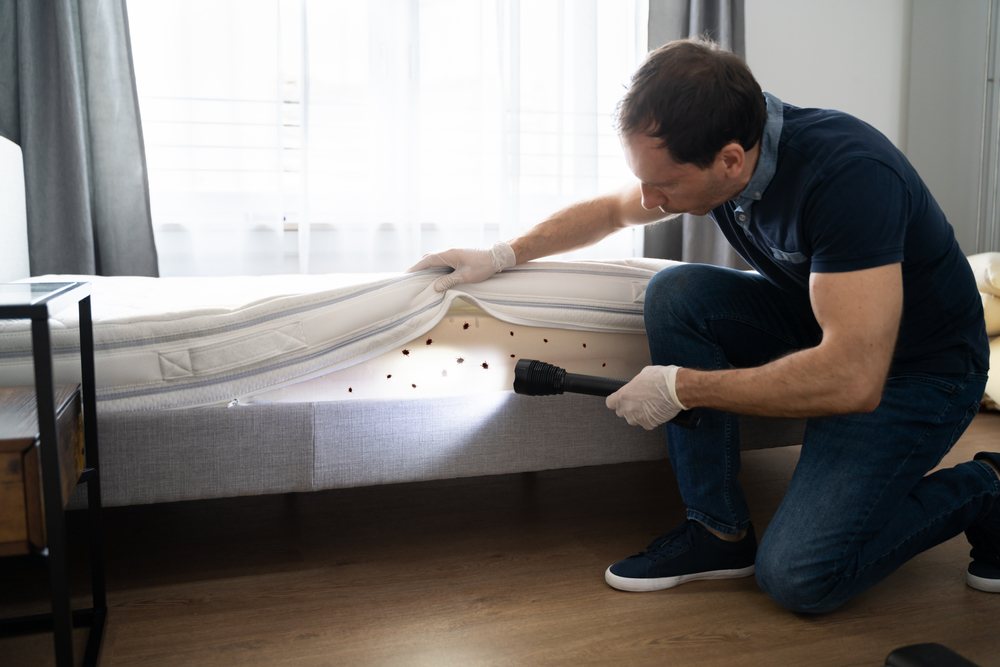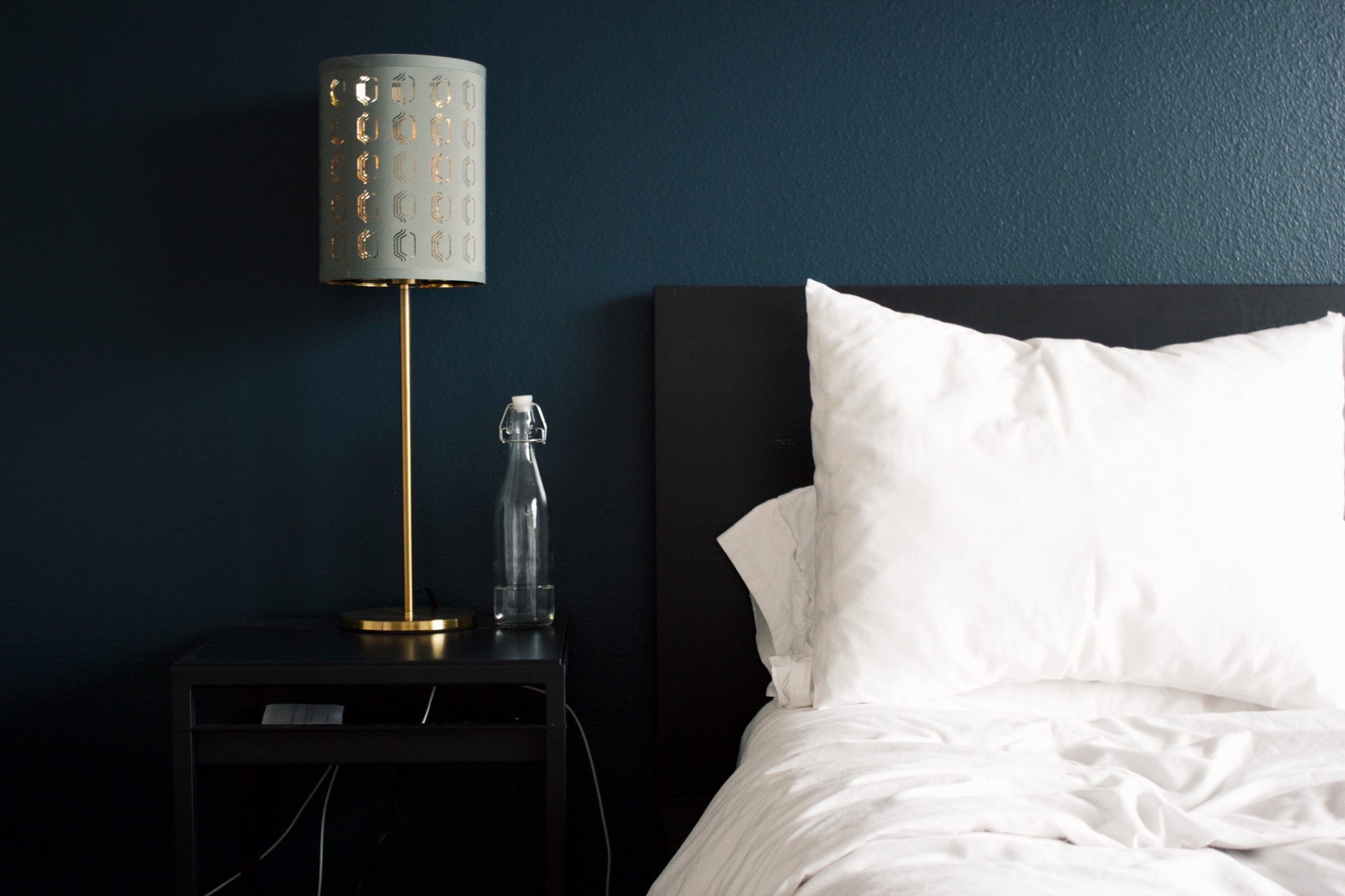Bed bugs, as their name suggests, typically reside in sleeping areas around beds.
Common places for them to hide include within the folds of the mattress, behind headboards, under pillows, and within the sheets.
But bed bugs can infest just about any part of your home…
Including your carpets and floors.

Since bed bugs prefer to live in unseen or hard to reach areas, they may live underneath your carpet. They can also hide in cracks or crevices in areas where the carpet meets the baseboards.
Though bed bugs won’t settle for carpeting in any given room…
Bed bugs (like all parasites), need a steady supply of food to fuel their growth and reproduction.
Therefore, if you have carpeting in your bedroom, bed bugs could be hiding there waiting for you to fall asleep.
So now you might be wondering..
How do you get rid of bed bugs in your carpet?
Let’s dive in.
Page Contents:
What Kills Bed Bugs in Carpeting?
There are a variety of techniques to kill bed bugs, regardless of whether or not they live in your carpeting.
In fact, it may be easier to remove these insects if you find them in your carpet than if you find them elsewhere!
Unlike bedding material, carpets are very shallow. This means that bed bugs can’t burrow deep inside the rug, and are stuck close to the surface.
Simply vacuuming your carpet can eradicate any bed bugs visible on your carpet. A vacuum can also suck up bed bug eggs and nymphs, effectively disposing of a whole colony.
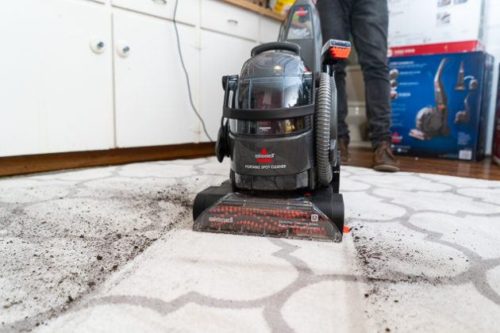
Diatomaceous earth is another viable method of bed bug removal in carpet.
When a bed bug walks over this powdery substance, the shards embed themselves into the bug’s exoskeleton. This causes internal damage, killing bed bugs from the inside out.
If you hire an exterminator, consider having your carpet steam cleaned. Bed bugs can’t withstand extreme heat, and the steam will kill any exposed bed bugs in a matter of minutes.
Steam treatments also deal with bed bug eggs, too. Be aware that, as with any professional treatment, a steam cleaning may take multiple sessions to completely eliminate an infestation.

An industrial heat treatment is probably the most effective.
(But also the most expensive).
With this process, exterminators utilize special heaters that raise the room temperature high enough to kill bed bugs permanently.
Should You Remove Carpet If You Have Bed Bugs?
At first, throwing away your bed bug-infested carpet might sound like a good idea. After all, getting rid of infested carpeting sounds like a logical way to eradicate the problem.
However, removing your carpet after an infestation is NOT recommended.
Carpet replacements are costly. The average cost to replace a carpeted floor is roughly $1,700 (HomeAdvisor). Factor this in with the cost of hiring pest control, plus the cost of replacing any infested furniture…
And you’re easily spending upwards of $10,000!
By removing your carpet, you also risk spreading the bed bugs to other areas in your home. They’ll simply find a new, remote place to re-establish their colony.
Bed bugs can even re-infest your furniture or flooring if they aren’t exterminated beforehand.

You also need to consider your neighbors.
If you live in an apartment complex or multifamily residence, then it’s possible for bed bugs to spread throughout the building.
Having your carpet cleaned or treated for bed bugs is a better solution. If you still want to replace your carpeting or furniture, wait until after the infestation is permanently eliminated.
This reduces the risk of your home facing a second infestation, and prevents bed bugs from infesting neighboring homes or apartments.
Do Bed Bugs Lay Eggs In Carpeting?
Bed bugs will lay their eggs wherever they make their nests.
And this can include your carpeting.
Eggs are laid on solid, stable surfaces. Bed bug eggs are coated with an adhesive, keeping them attached to the spot where they are laid.
Larvae usually hatch from the eggs after 1 to 2 weeks.
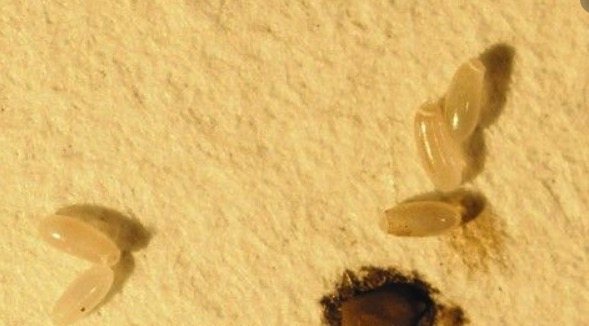
Spotting a bed bug egg can be quite difficult. They are translucent, allowing them to blend in with their surroundings. Eggs are also incredibly small, only measuring 0.1 inches in length.
(That’s smaller than a pinhead!)
A female bed bug will lay an average of 500 eggs in her lifetime, so if not dealt with, the entirety of your carpet can become infested within a matter of months.
Can You See Bed Bugs In Carpeting?
On average, bed bugs are less than ¼ inch long. Their small size makes it difficult to notice them with the naked eye.
They also don’t like being out in the open. If bed bugs are living in your carpeting, they’ll make themselves at home in dark/damp areas, like underneath the carpet or inside baseboards.
Bed bugs are also nocturnal. They come out at night to feed on human blood, then return to their nest once they’re fully engorged.
On the off chance that you do spot a living bed bug on your carpet, you can identify one based on the following characteristics:
- Short, flat body
- Reddish-brown skin
- Around ¼ inch in length
Bed Bugs in Carpet vs. Hardwood
Bed bugs are very adaptable creatures. Provided they have regular access to food, they can survive on a hardwood floor the same way they can live in carpeting.
Though hardwood can make a bed bug’s life slightly more challenging.
While a bed bug can burrow into soft materials like carpet or bedding…
They cannot burrow into wood.
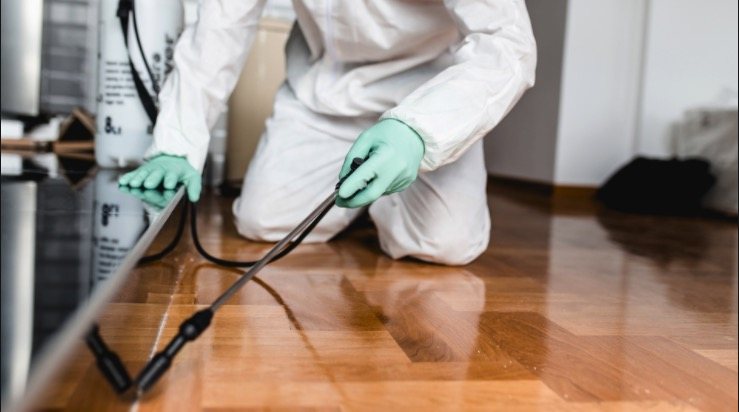
Instead, bed bugs will look for cracks in the wood, like the spaces between floorboards.
Niche spaces such as this are ideal for bed bugs, who prefer to remain unnoticed by humans.
Wood floors also provide a solid surface for females to lay their eggs.
Signs of Bed Bugs in Carpet
The signs of a bed bug infestation are consistent regardless of where they are. If you suspect an infestation, look out for the following:
Bug Bites: If you notice bug bites when you wake up in the morning, this is a clear sign that bed bugs are in your room. Bed bug bites are red-colored welts that appear in small clusters. Inspect the immediate area around your bed, including the carpet, for any bed bugs.
Droppings and Shed Skin: While bed bugs love to hide, they don’t always cover their tracks. Keep an eye out for droppings, molted skins (transparent exoskeletons shaped like a bed bug), and eggs (milke-white, pearly objects).
Active Insects: Because bed bugs are so small, they can fit practically anywhere. Look for cracks and crevices where the carpet meets the wall, as these could possibly shelter bed bugs. If you have a rug, simply lift it up and check for any signs of activity.
Summary
Bed bugs are able to survive just fine in carpeting. As long as they have access to a consistent food source, they will continue to grow and reproduce.
Here are the best techniques for removing bed bugs from carpeting based on the severity of an infestation.
| Severity of Bed Bug Infestation | Removal Method |
|---|---|
| Light Infestation | Vacuum Your Carpet |
| Medium Infestation | Diatomaceous Earth |
| Medium Infestation | Steam Cleaning |
| Medium Infestation | Bed Bug Sprays & Chemicals |
| Heavy Infestation | Industrial Heat Treatment |
